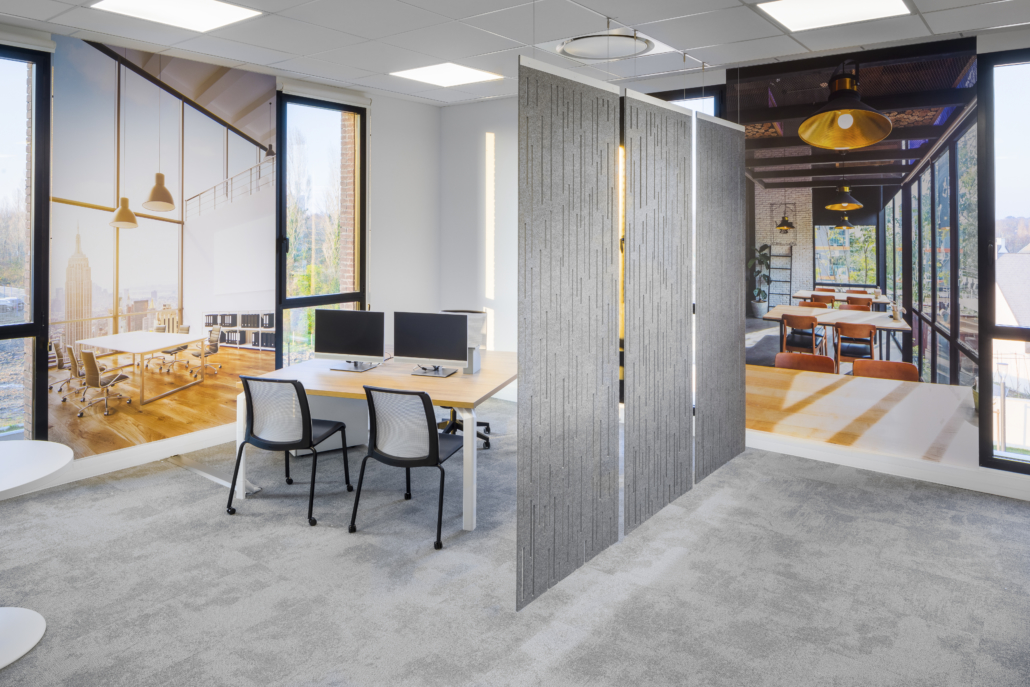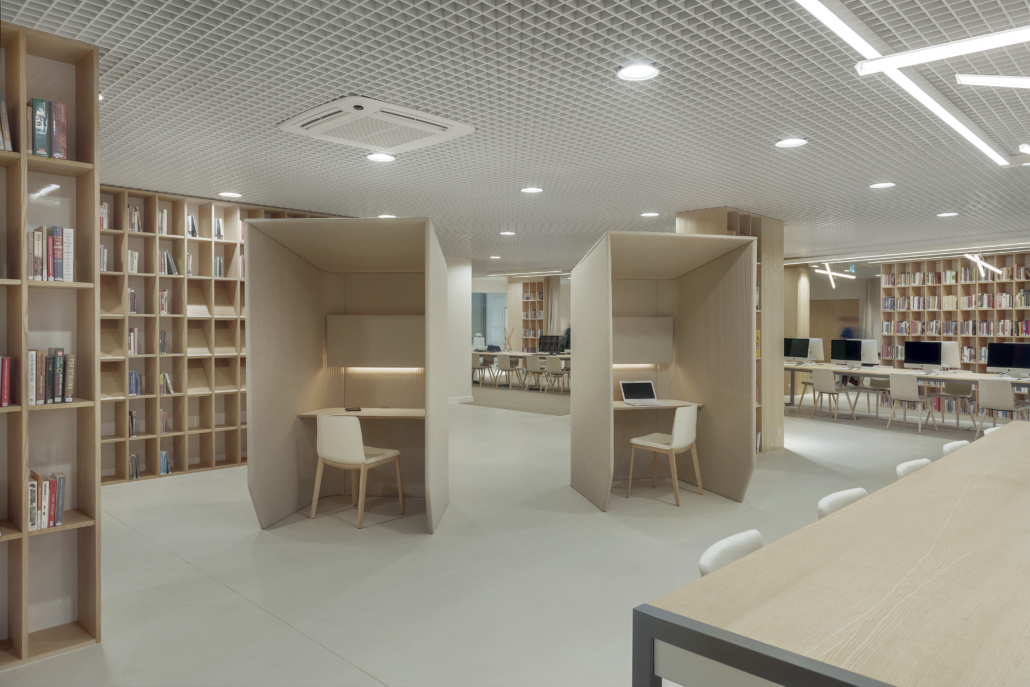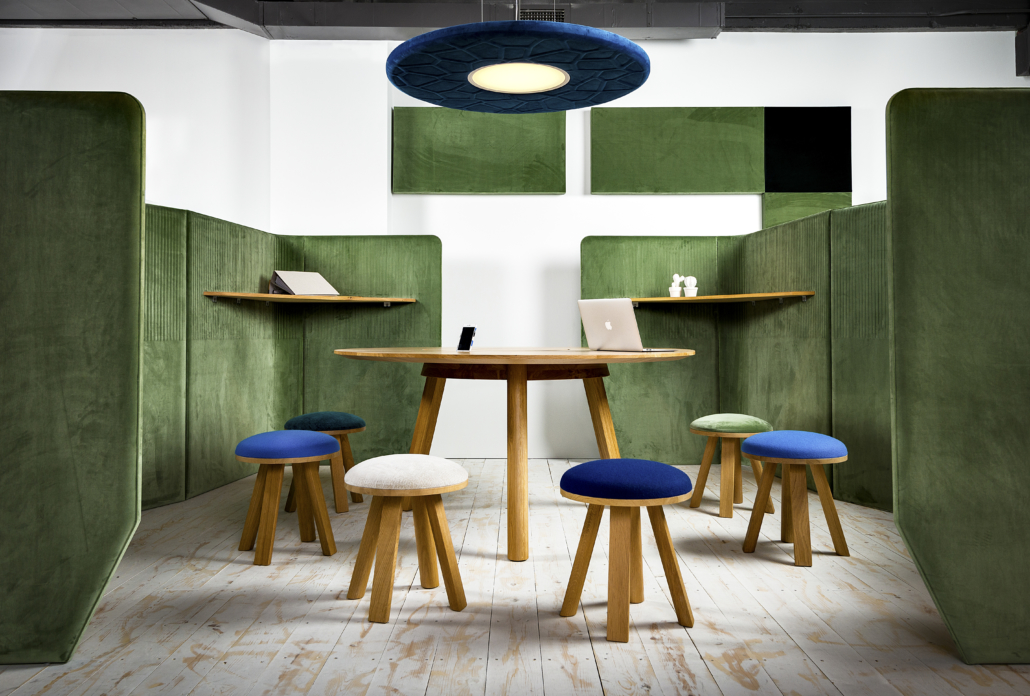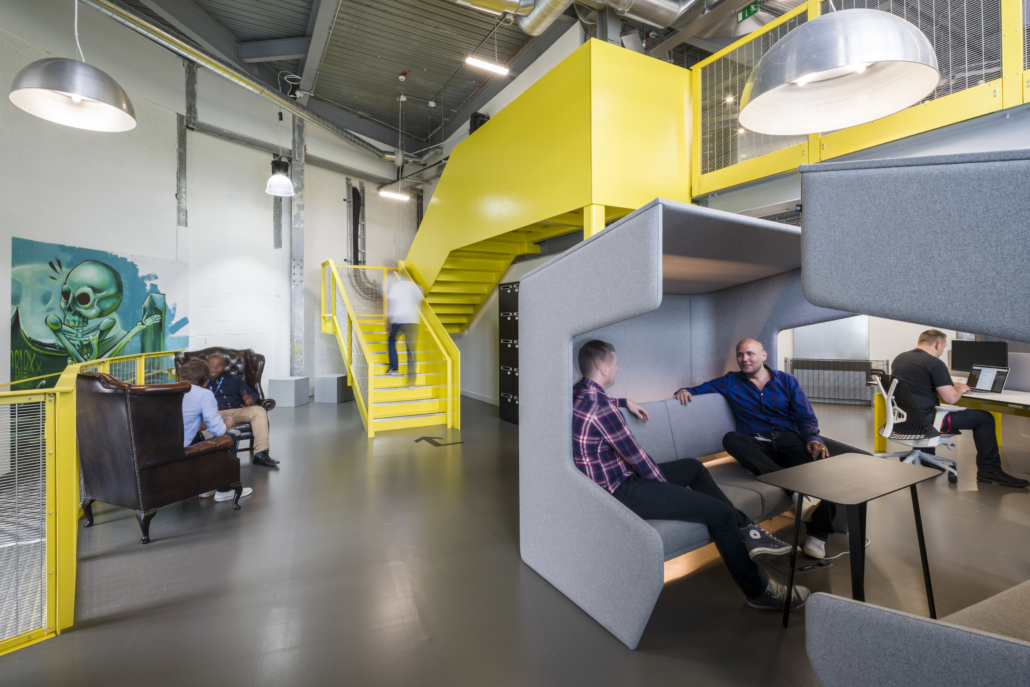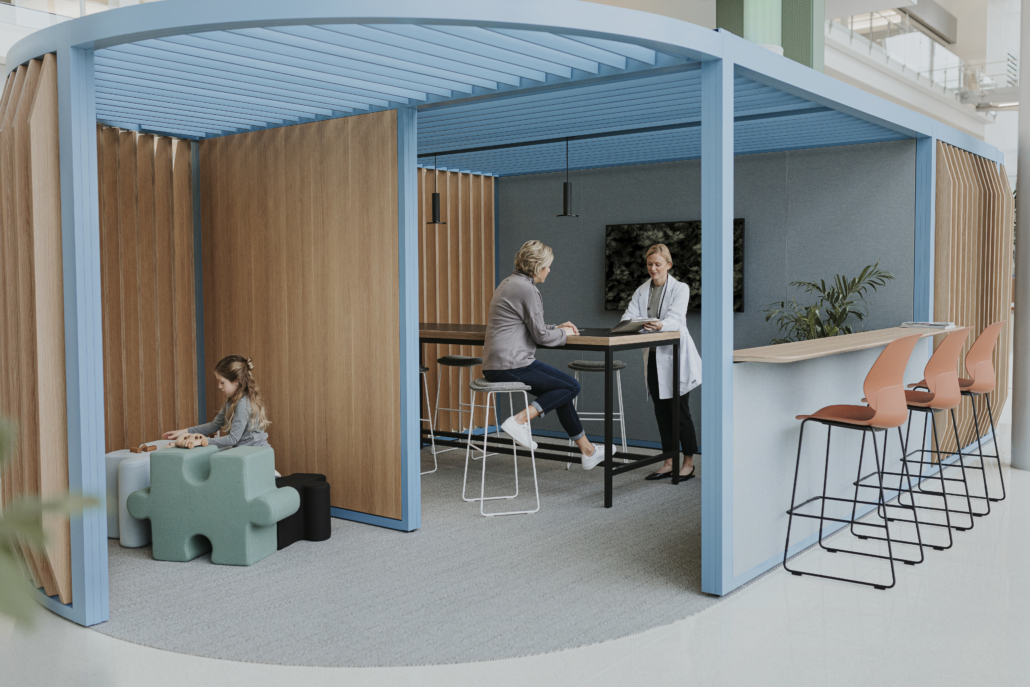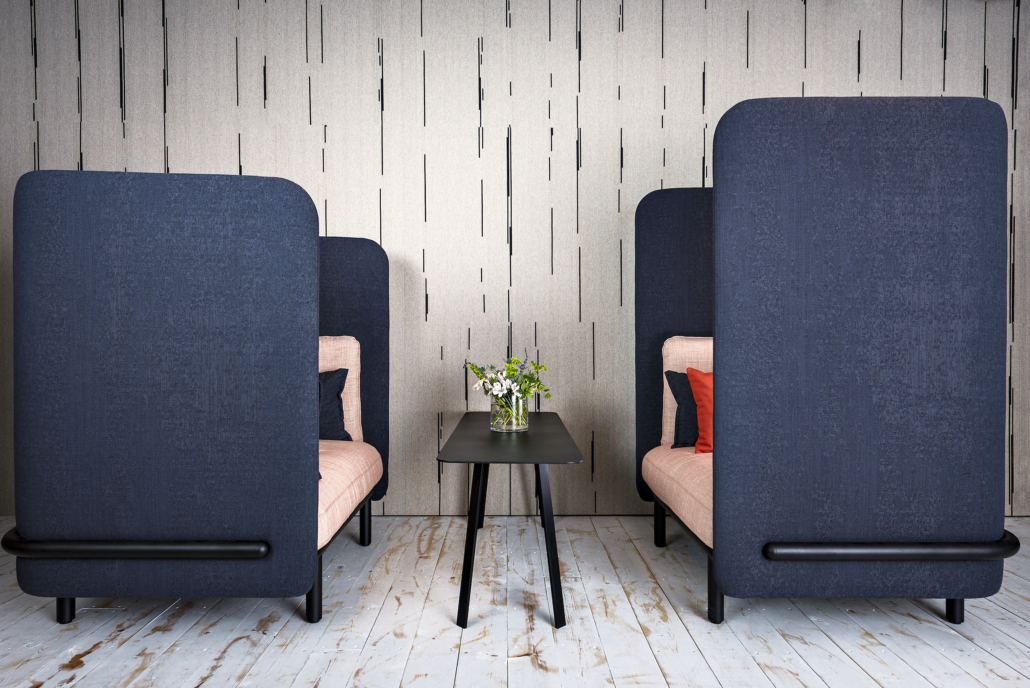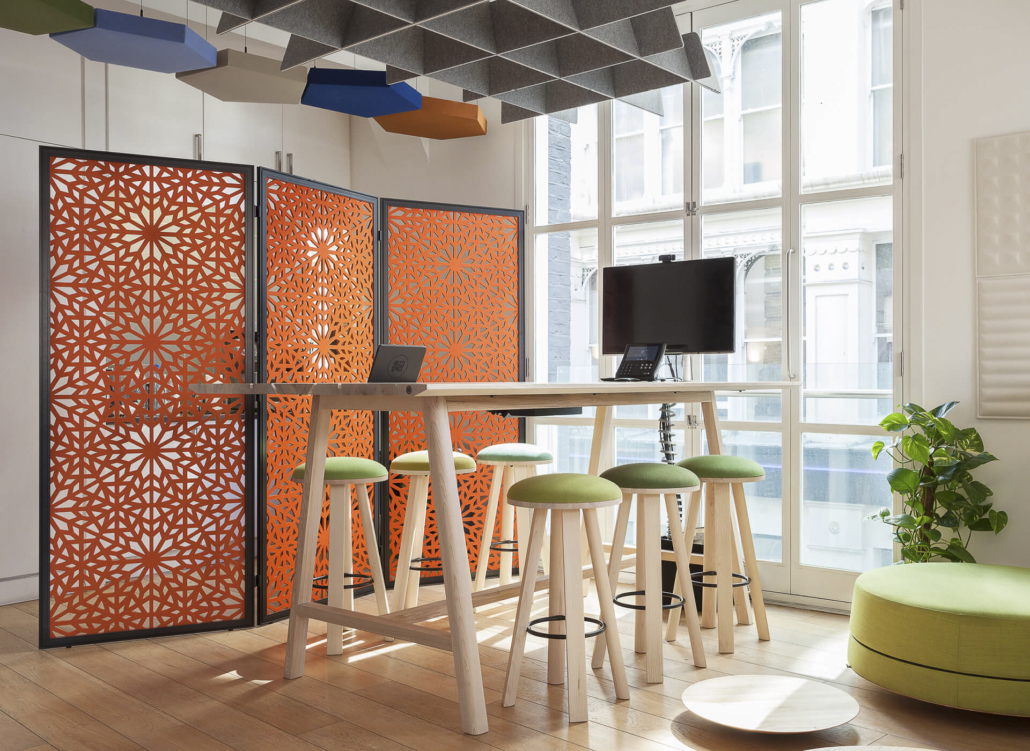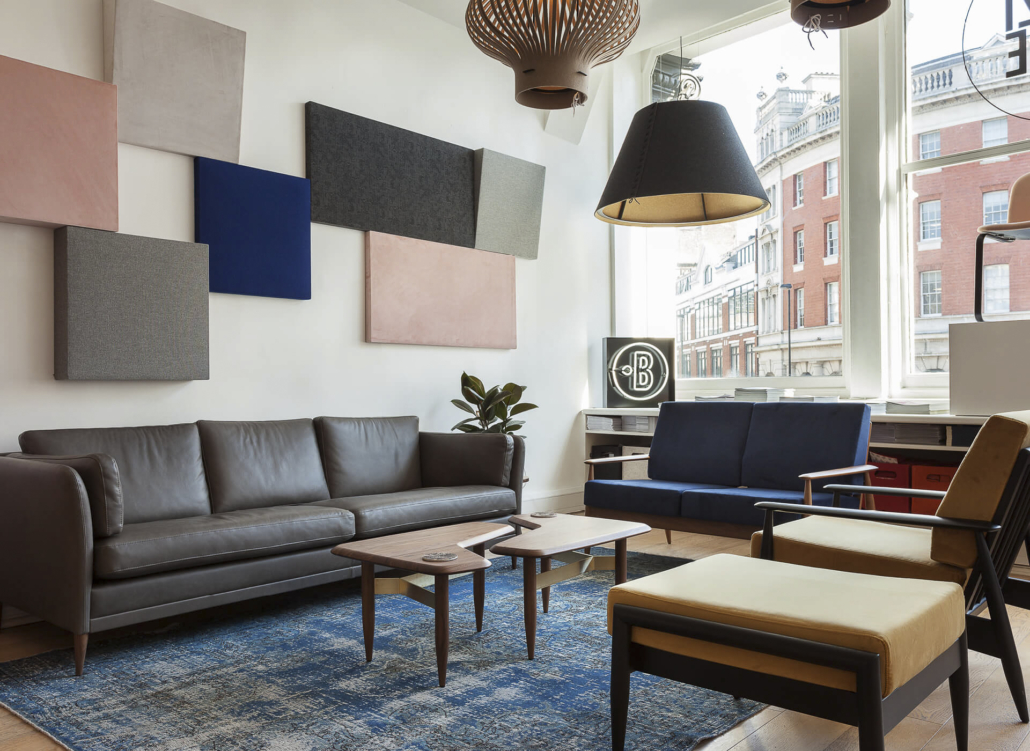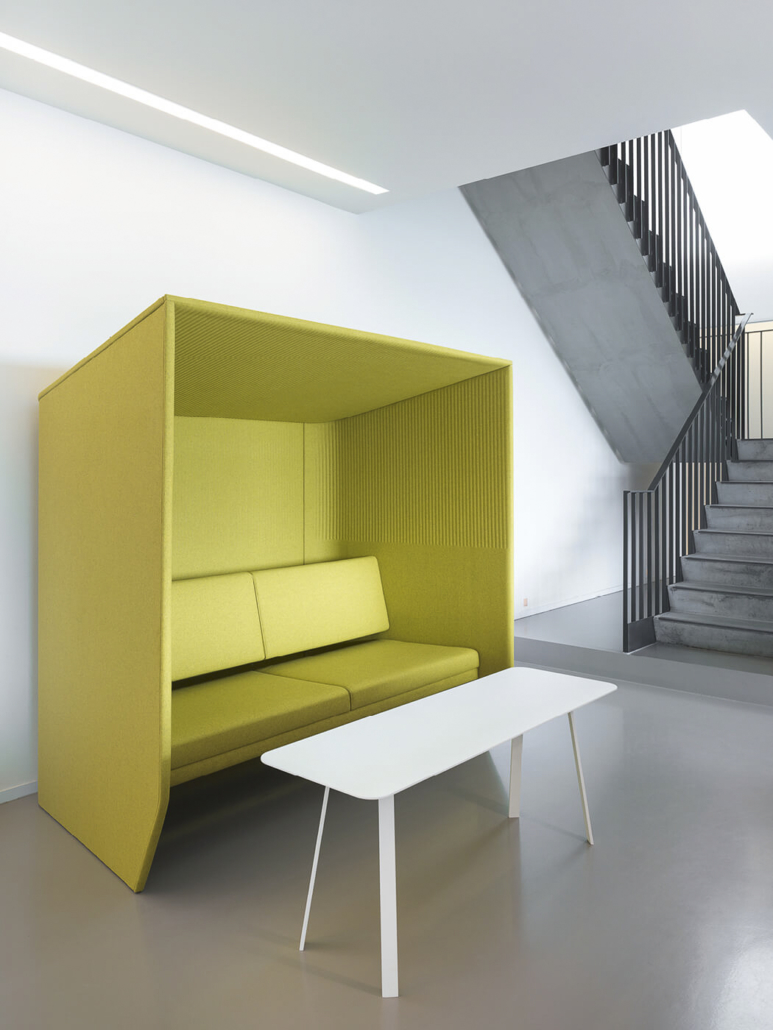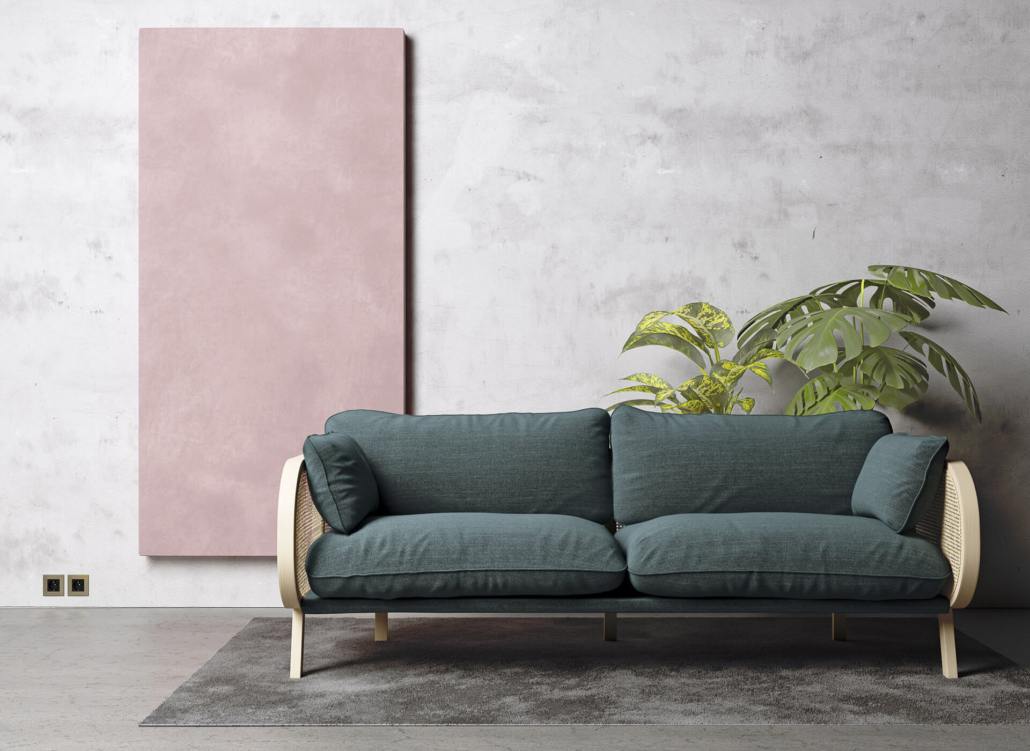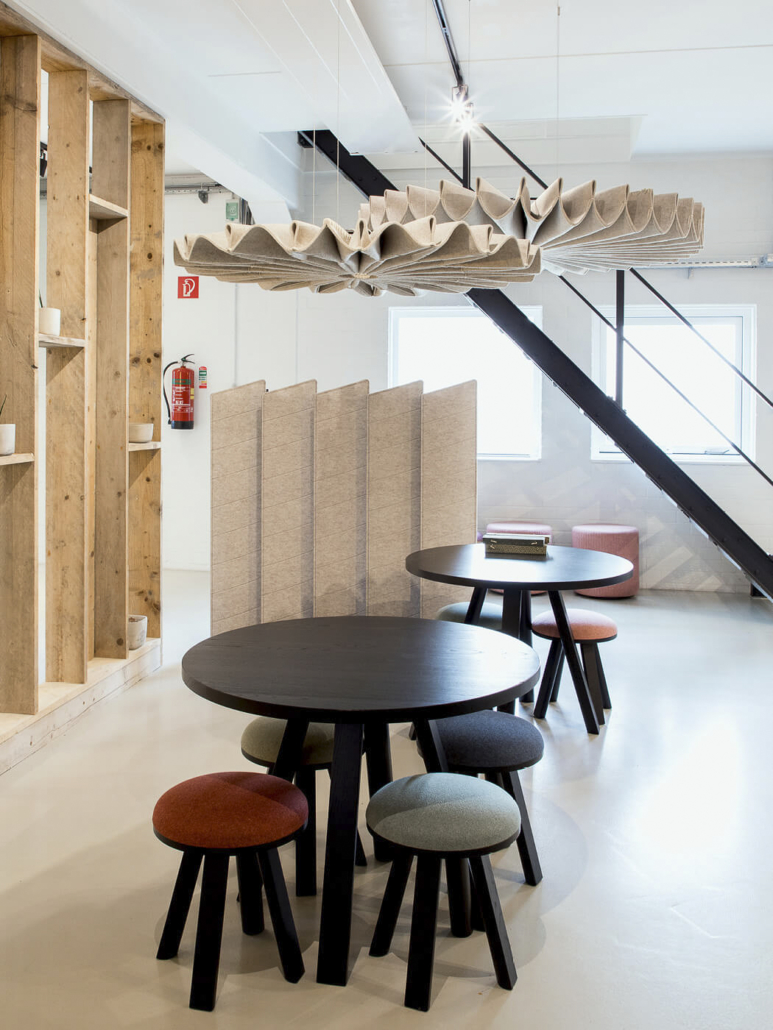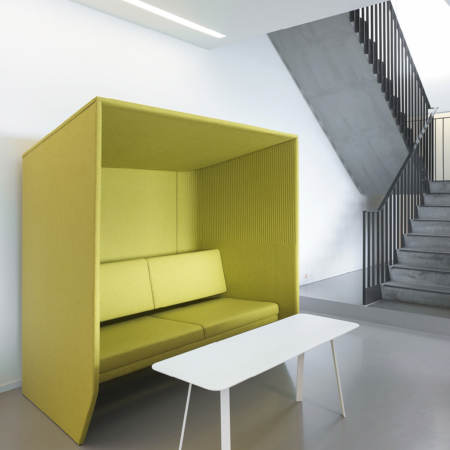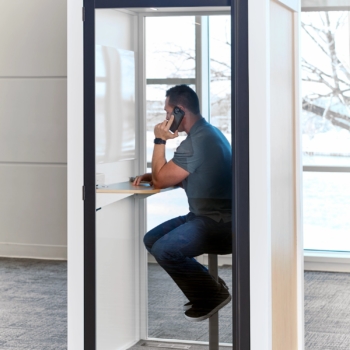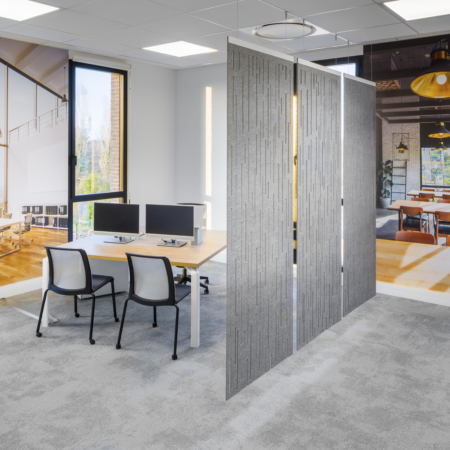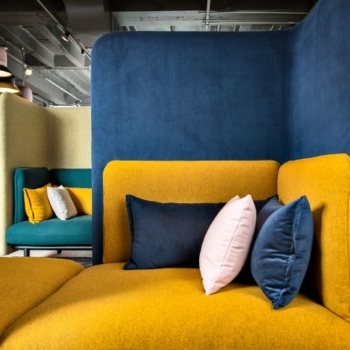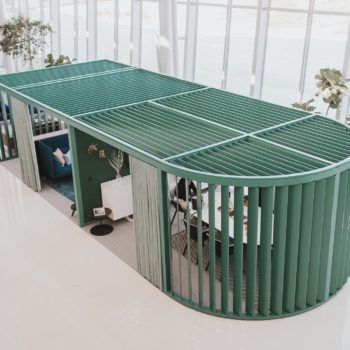The Time: Mid-2022, The Setting: Back at Work.
Last year, we grew accustomed to our comfy living rooms, our home offices, the comforting sounds of home–
And now we’re back! Surrounded by the hustle and bustle of friendly faces.and like-minded individuals working and conversing.
Oh how we missed the productivity of it all.
Though we are hard at work, we can’t help but overhear other’s conversations, meetings coming and going, groups passing through-
We wonder if there were a way to optimize our working space, in order to achieve the solitude our intimate homes once provided.
Often, we only consider acoustics once we experience an actual problem in the office—excessive background noise, too many distractions or lack of privacy. Therefore, acoustic solutions should be part of the design process of a space from the very beginning. If your space is in dire need of some acoustic improvements- large, expensive structural changes aren’t needed.
Here’s our take on the importance of Acoustic Design, including tips and products for you to achieve an acoustically optimized workspace.
One of the most significant factors in job satisfaction is often overlooked simply because you can’t see it: acoustics.
In the movement toward open office plans, people have an increased desire to find spaces in the workplace that provide confidentiality for both work-related and personal conversations. Additionally, different activities require different ways of managing acoustical privacy, leading people to seek out a variety of workspaces—each with specific characteristics that support the work they’re doing at the time. Providing a variety of workspaces with well-designed acoustics allows for proper levels of speech privacy to ensure confidentiality.
Employers who understand and address this need for varying workspaces have more success in achieving higher job satisfaction rates.
The ABCD of Effective Acoustical Design
To manage speech privacy and intelligibility, follow the ABCD of acoustical workspace design by using elements that absorb, block, cover, and diffuse sound.
Absorb Sounds Within a Space
Special absorptive ceilings, suspended baffles, carpeted floors, and even decorative rugs not only reduce sound levels within rooms, they also reduce undesirable reflection of sound which can cause
intelligible speech sounds to carry throughout a space.
Block Sounds Between Spaces
Walls, moveable walls, double pane (2 channel) glass walls, unitized wall systems, and suspended ceiling tiles can all provide physical barriers that block the transmission of speech sounds between rooms.
Cover Intruding Sounds With Background Noise
An electronic sound masking system covers sounds with a consistent background noise. A sort of highly sophisticated “white noise machine,” a masking system is precisely programmed to reduce perceived inconsistencies in sound, such as those created by speech. Masking systems are finely tuned in both frequency and level to meet the needs of different areas throughout the entire workspace.
Diffuse Sounds Within a Space
In larger spaces, physical construction using sound diffusers placed on the walls or ceiling diffuse, or scatter, desired sounds throughout the room, ensuring intelligibility for all intended listeners. Diffusers keep desired sounds from being absorbed or degraded before reaching listeners farther away from the sound source. It is important to note that A, B, and C techniques are often used to keep diffused sound contained in its space, so as not to disturb those in surrounding areas.
Effective acoustical design may be invisible to most people, but the benefits are easy to see. Employees will be more comfortable at work knowing they have spaces for privacy and connection—where they won’t disturb others who are concentrating on focused tasks nearby. It may take some additional effort, but designing with speech privacy in mind will help keep employees happy, engaged, and productive at work.
Invisible Design for performance – Haworth Spark Jul 19 2018
Attainable Applications
How do you figure out what your space’s acoustic needs are?
Step 1: Detect the source of the acoustic problem or noise
Step 2: Define the type of acoustic problem
Step 3: Choose a solution for the type of room
Step 1: Detect the source of the acoustic problem or noise
— Acoustic issues related to building acoustics
As the name implies, building acoustics has to do with the building and the transmission of sounds from outdoor to indoor and between structural elements of a building, e.g. floors and walls.
This is the case when:
- Sound is transferred from outdoor to indoor, e.g. cars, trams, airplanes passing by
- Sound is transferred between floors, e.g. footsteps from the floors above
- Sound is transferred between adjacent rooms, e.g. an adjacent meeting room
Ideally, issues like these should be addressed by the architectural team through insulation of windows, walls, ceilings, and floors. Another option is to remedy the transmission of sounds, so they will not escape the room to begin with.
Improving building acoustics by means of insulation in an existing space might be a costly affair. To avoid big, and sometimes, unexpected investments like these, you can still treat sound and noise issues with a number of solutions that will not ruin your budget. For instance, consider bringing in acoustic panels, free-standing sound-absorbing elements or even add curtains, rugs, plants and other porous, soft objects that will help absorb sound waves. As a general rule of thumb, the more porous materials you have, the fewer sound transfers will transpire.
For additional recommendations and advice on how to remedy sound transfers in existing spaces, get in touch with one of our acoustic consultants.
— Room acoustics: noise and sounds within a room or given space
Opposite to building acoustics, room acoustics pertain to noise and sounds within a room or any given space. Rather than focusing on insulation to remedying transmission of sounds, the key to room acoustics is absorption to prevent sound waves from bouncing back-and-forth in a room.
We’ve listed a few examples below that are often reported as the cause of complaints. Perhaps one of these are identical or similar to the issues you’re experiencing?
- Disturbances from chatty colleagues
- Air conditioning and heating
- Disturbed by conversations from the other end of the room, e.g. from communal spaces
- Difficult to concentrate with too many distractions
- Visual distractions, for instance, if you’re sitting next to the entrance or reception
- Need for privacy when people are overhearing your conversation
If you recognize one of these issues, your problem is most likely linked to poor room acoustics. But don’t worry, we have a range of solutions to remedy problems like these. Each type of issue may require a different solution, which is why the next step involves defining the specific type of acoustic problem you need to solve.
Step 2: Define the type of acoustic problem you need to solve
The problems that often arise in relation to poor room acoustics are many, but to give you a better overview, we’ve grouped them into the following:
- Reverb and echo
- Background noise
- Lack of privacy
— Reverb and echo
Reverb and echo are often confused, and with good reason as the terminology can be too complex. So, let’s try to make it clear.
Reverberation is the persistence of a sound after the original sound has stopped. The brain will recognize the sound as one extended event. So, when we talk about sound transfers in a room and noise traveling from one to another end of a space, the reverberation time is too high—or, in other words, it takes too long for the original sound to drop dead. Reverb sounds may originate from people talking, air conditioning or other mechanical devices such as copiers or printers.
Echo, on the other hand, transpires when a beat of sound can be heard twice or even more times. In this case, the brain will perceive the sound as separate events.
In 99% of the cases, it’s reverberation, and not echo, that causes noise problems in workspaces.
— Background noise
Background noise—or noise pollution—as it’s also labeled, is one of the most common causes for
- lack of concentration,
- disrupting productivity, and
- impacting well-being and happiness in the workplace negatively.
Examples of background noises include
- chatty colleagues,
- ringing phones, and
- mechanical devices, e.g. refrigerators, coffee machines, and printers.
— Lack of privacy
When we talk about lack of privacy, we refer to it in its broadest sense, including both
- Acoustic privacy (e.g. speech privacy)
- Visual privacy (e.g. no visual distractions)
To think that problems related to lack of privacy are linked entirely to open plan offices is counterproductive. The reality is that even employees working in cubicles report dissatisfaction with speech privacy while visual privacy isn’t a problem.
Therefore, searching for a solution to remedy privacy complaints, remember to consider all aspects of privacy as one solution will not automatically resolve both problems.
Possible solutions
Whether you’re looking for visual or acoustic privacy, we’ve gathered some different solutions for you below. For a private call or meeting, opt for solutions that provide you with shelter, such as phone booths or privacy booths like BuzziBooth or KI Wiggle Room Pod. You may also consider free-standing elements, e.g. room dividers, or desk partitions to divide areas and mitigate sound transfer between specific zones e.g. Modular Walls, BuzziFalls or BuzziDesk.
Step 3: Choose a solution for the type of room
— Different activities require different solutions
You have narrowed down the problem you want to solve, but finding the most suitable solution to it also depends on the activity of the space whether it’s a cafeteria, meeting room, lobby, library, open office, auditorium, private office or a restaurant. The list can be continued.
If we talk about reverberation time, there’s no universal standard that applies to all spaces. Instead, the recommended reverb time depends on the size of the room, the type of activity you wish to perform along with the number of people typically in the room.
For instance,
in an open office space consider adding desk partitions to existing desks and furnish with privacy booths to create both acoustic and visual privacy.
In libraries, delineate different zones with room dividers or create small imaginary islands with acoustic lighting.
All depending on the activity and your need to focus, meet or socialize, we offer a variety of solutions for you. Do you need help picking the right solution?
— Soft or hard surfaces
Depending on the way your space is built, e.g. soft or hard surfaces, you will need different solutions.
If your room already consists of a number of soft, porous materials such as carpets, rugs, plants—even people—these elements help absorb sound waves too. In other words, you’re already halfway and will need less sound-absorbing solutions.
If, on the other hand, no such soft materials exist and your space is dominated by hard surfaces, e.g. concrete, glass, and metal, you need to bring in more soft, absorbing materials to compensate for the hard surfaces. For instance, add flexible upholstered poufs or consider acoustic lighting and ceiling applications in case your walls are already occupied by shelving systems and art. eg. Buzzi Pleat LED, Buzzi Donut, and Buzzi Moon.
— Distance to hard surfaces
Apart from determining the number of soft materials, another crucial aspect is to identify the shortest distance to the hard surface in your space. Why? Sound waves automatically bounce against the closest hard surface and knowing where this is will help you better determine where to apply acoustic solutions rather than placing them randomly.
Think of a regular meeting room with a medium-sized conference table in the middle. As people start talking, the sound waves from their conversations will typically first hit the walls or the ceiling depending on the height. In this case, to prevent the sound from bouncing back-and-forth between the walls, we’re looking to apply absorbing materials to the walls.
— Stuffed or spacious?
In a space already occupied by other furniture pieces, it can be difficult to find room for any acoustic solutions. However, often in between floor and ceiling there is not always a lot happening, and in spaces like these, it might be a great improvement to add, for instance, ceiling applications and acoustic lighting.
When you have a more spacious environment, perhaps not yet furnished, you have the chance to pick solutions based on the type of activity of the space. For instance, rethink the standard meeting setup and use soft lounge seating elements or put two privacy booths together to keep conversations private.
In general for bigger and more spacious environments, remember that the sound will naturally better spread out as the distance to the hard surfaces is bigger than in a small room.
Keep in mind, all of the solutions listed above are only suggestions, guiding you in the right direction. For specific measurements and the number of
products needed, please get in touch with our professional team. We will
be happy to provide a complementary acoustic assessment of your space
to increase productivity, privacy and happiness in your workplace.
Featured Products:
Need acoustic advice?

